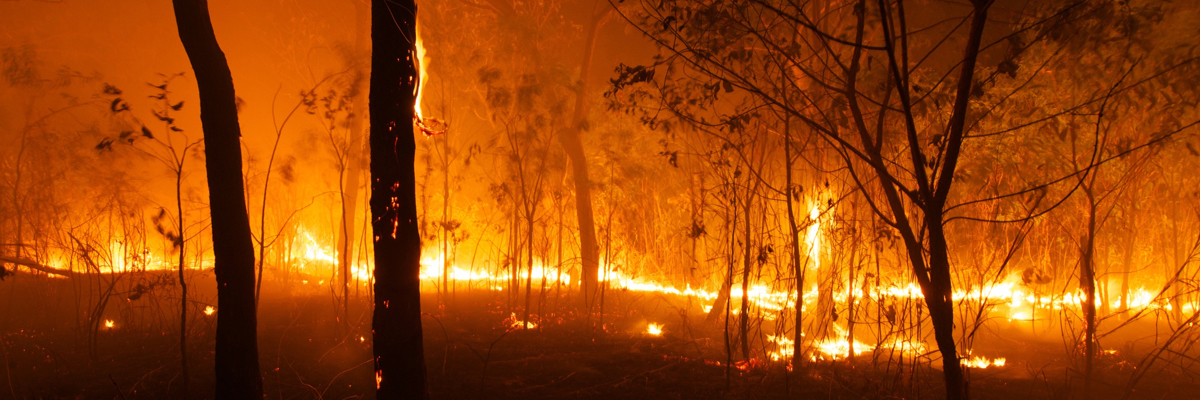Ensuring Bush Fire Protection Through Proper BAL Report Analysis
In the world of bush fire security, the meticulous analysis of Bushfire Attack Level (BAL) reports stands as a foundation for protecting homes against the terrible impact of wildfires. With ecological factors and residential or commercial property qualities playing substantial functions in figuring out the level of danger, a thorough understanding of BAL scores comes to be vital.
Understanding Bushfire Strike Degree (BAL)
In the realm of bushfire protection, understanding the Bushfire Strike Level (BAL) is paramount for making sure efficient mitigation approaches. Recognizing the BAL score of a building is crucial for home builders, policymakers, and owners to carry out suitable steps to secure against bushfire threats.

Value of BAL Report Evaluation
A necessary aspect in bushfire protection preparation includes the comprehensive evaluation of BAL reports to examine the prospective risks and establish proper reduction approaches. BAL reports provide essential details about the potential effect of bushfires on a property based upon various elements such as plants type, range to prospective fire dangers, and slope of the land. Evaluating these reports with precision is extremely important in creating efficient bushfire security actions tailored to the particular danger account of a building.
Applying Fire Defense Measures
Applying effective fire security actions is crucial for securing properties in bushfire-prone locations. This entails clearing up flammable greenery, such as dry leaves and branches, within a specific distance of the residential property.
Furthermore, having a sufficient and well-maintained supply of water, such as a storage tank or pool, can assist firefighters in their initiatives to shield the building. It is essential to have a clear evacuation plan in place and to ensure that all homeowners recognize with the treatments. Additionally, having firefighting tools conveniently offered, such as pipes and fire extinguishers, can help in dealing with small place fires prior to they escalate. Overall, applying a mix of these fire security measures can significantly raise the opportunities of guarding residential or commercial properties throughout bushfire occasions.
Mitigating Risks in Fire-Prone Areas
To strengthen residential properties versus bushfire hazards, a critical emphasis on mitigating threats in fire-prone locations is important. One important element of danger mitigation is maintaining defensible area around properties by clearing flammable plant life, making certain ample spacing in between trees and frameworks, and employing fire-resistant landscape design methods.
In addition, building or retrofitting buildings with fireproof products and making sure appropriate maintenance of roof coverings, seamless gutters, and outside cladding can substantially enhance the building's durability to bushfires. Establishing and practicing a bushfire emergency strategy with all residents, including discharge procedures and interaction methods, is also vital in mitigating risks effectively. By taking on a proactive approach to run the risk of mitigation in fire-prone locations, homeowner can much better safeguard their assets and improve general bushfire preparedness.
Ensuring Building Security and Strength
Guaranteeing the safety and security and durability of properties in fire-prone locations calls for an unfaltering dedication to robust safety nets and tactical preparation. Residential or commercial property safety and security Your Domain Name begins with carrying out reliable steps to lower fire risks. This consists of maintaining a defensible area around the residential or commercial property by getting rid of combustible greenery, making certain proper maintenance of gutters and roofings, and making use of fire-resistant building materials. Regular maintenance of firefighting devices, such as pipes and automatic sprinkler, is also important to building resilience.
Strength, on the other hand, includes the capacity of a residential or commercial property to hold up against and recover from a bushfire. By proactively resolving these aspects, residential property proprietors can better safeguard their possessions and enjoyed ones from the hazard of bushfires.
Conclusion
Finally, making sure bushfire protection via appropriate BAL record evaluation is essential for recognizing the level of threat posed by bushfires and carrying out required fire protection procedures. By alleviating risks in fire-prone locations and guaranteeing home safety and security and durability, individuals and communities can much better prepare for and respond to bushfire events. It is necessary to focus on fire safety actions to secure lives and residential or commercial property in these high-risk settings.
In the world of bush fire protection, the meticulous evaluation of Bushfire Assault Degree (BAL) reports stands as a keystone for securing residential properties versus the terrible impact of wildfires (BAL Report). Recognizing the BAL score of a building is more tips here vital for property policymakers, contractors, and owners to implement ideal actions to my response protect against bushfire threats

BAL records give important info concerning the potential effect of bushfires on a property based on numerous elements such as plants type, distance to prospective fire threats, and incline of the land (BAL Report). Generally, executing a mix of these fire defense measures can considerably raise the chances of securing residential properties during bushfire occasions